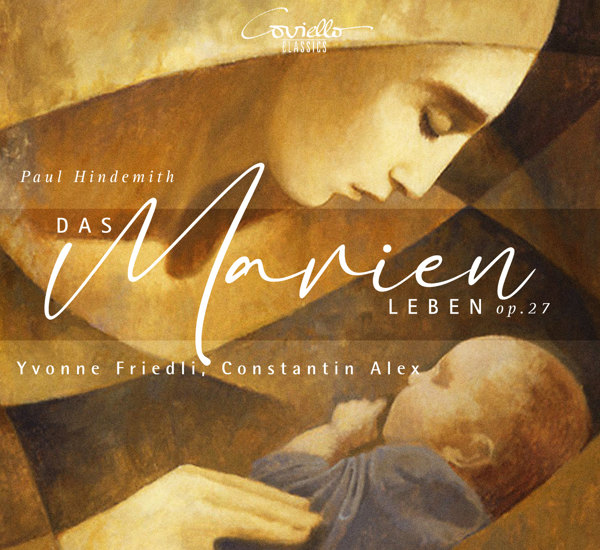
Paul Hindemith
Yvonne Friedli ⋅ soprano
Edition: Coviello Classics
Booklet: de / en
Media: CD / HD Download
“The greatest song cycle ever written.” – at least Glenn Gould is very clear in his judgement of Paul Hindemith’s Marienleben. This superlative does not necessarily have to be shared, but what the 27-year-old, who was already one of Germany’s best-known musicians at the time in 1923, achieved is certainly worth hearing and marvelling at. Celebrated as an instrumentalist, Hindemith was considered a bourgeois terror as a composer, provoking with sayings such as “Tonschönheit ist Nebensache” (beauty of tone is a secondary matter) or “Nimm nehmen keine Rücksicht auf, was Du in der Klavierstunde gelernt hast” (have no regard for what you learned in piano lessons). In Mary’s Life, based on a collection of poems by Rainer Maria Rilke, he shows a completely different, internalised side. “There is something in these songs that forces and fascinates the listener beyond all habits of conventional song manner” wrote a contemporary reviewer, and to this day there is nothing to add. Yvonne Friedli and Constantin Alex make it palpable in their sensitive interpretation.
| Paul Hindemith (1895-1826) Das Marienleben, op. 27 Text: Rainer Maria Rilke (1875-1926) |
||
| 1. | Geburt Mariä | 2:47 |
| 2. | Die Darstellung Mariä im Tempel | 6:29 |
| 3. | Mariä Verkündigung | 4:38 |
| 4. | Mariä Heimsuchung | 2:44 |
| 5. | Argwohn Josephs | 1:55 |
| 6. | Verkündigung über den Hirten | 6:10 |
| 7. | Geburt Christi | 4:34 |
| 8. | Rast auf der Flucht in Ägypten | 3:22 |
| 9. | Von der Hochzeit zu Kana | 7:13 |
| 10. | Vor der Passion | 5:19 |
| 11. | Pietà | 3:10 |
| 12. | Stillung Mariä mit dem Auferstandenen | 2:08 |
| 13. | Vom Tode Mariä I | 6:44 |
| 14. | Vom Tode Mariä II | 6:39 |
| 15. | Vom Tode Mariä III | 2:51 |
| Total time: | 1:06:50 | |
